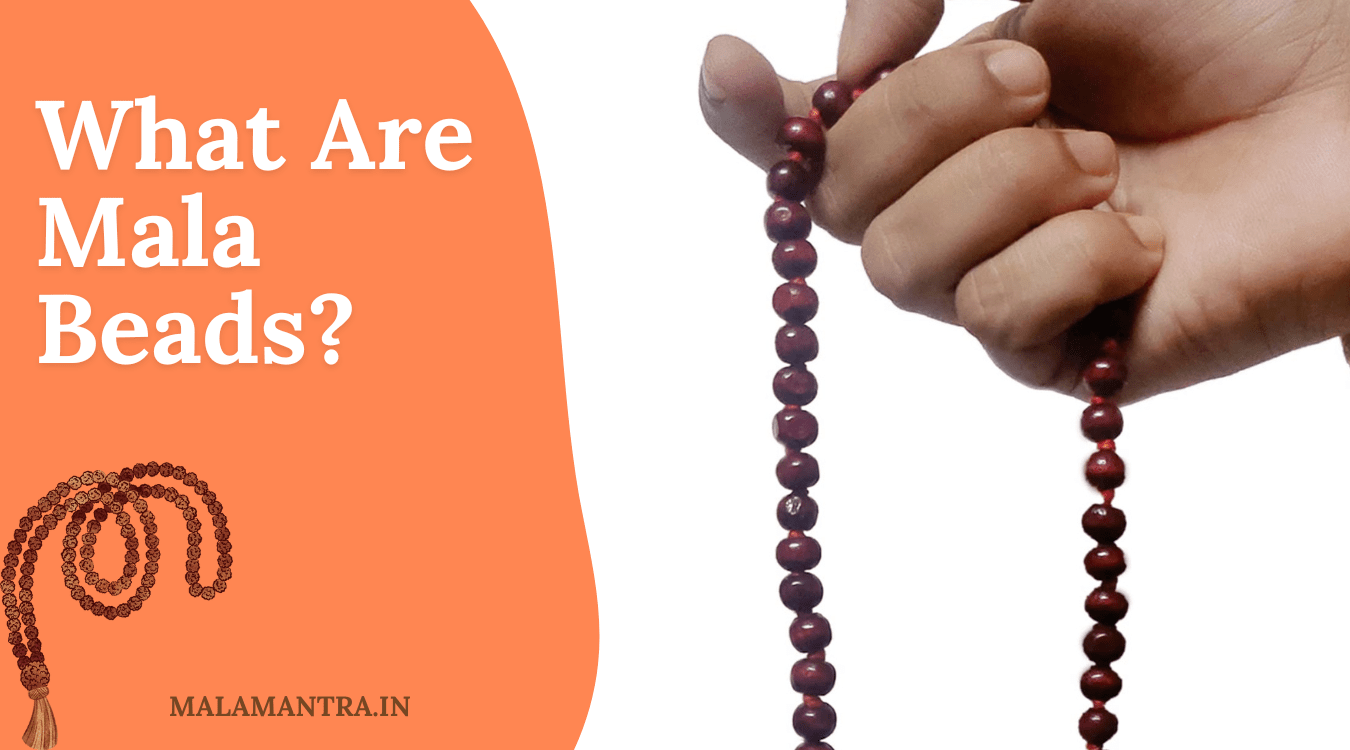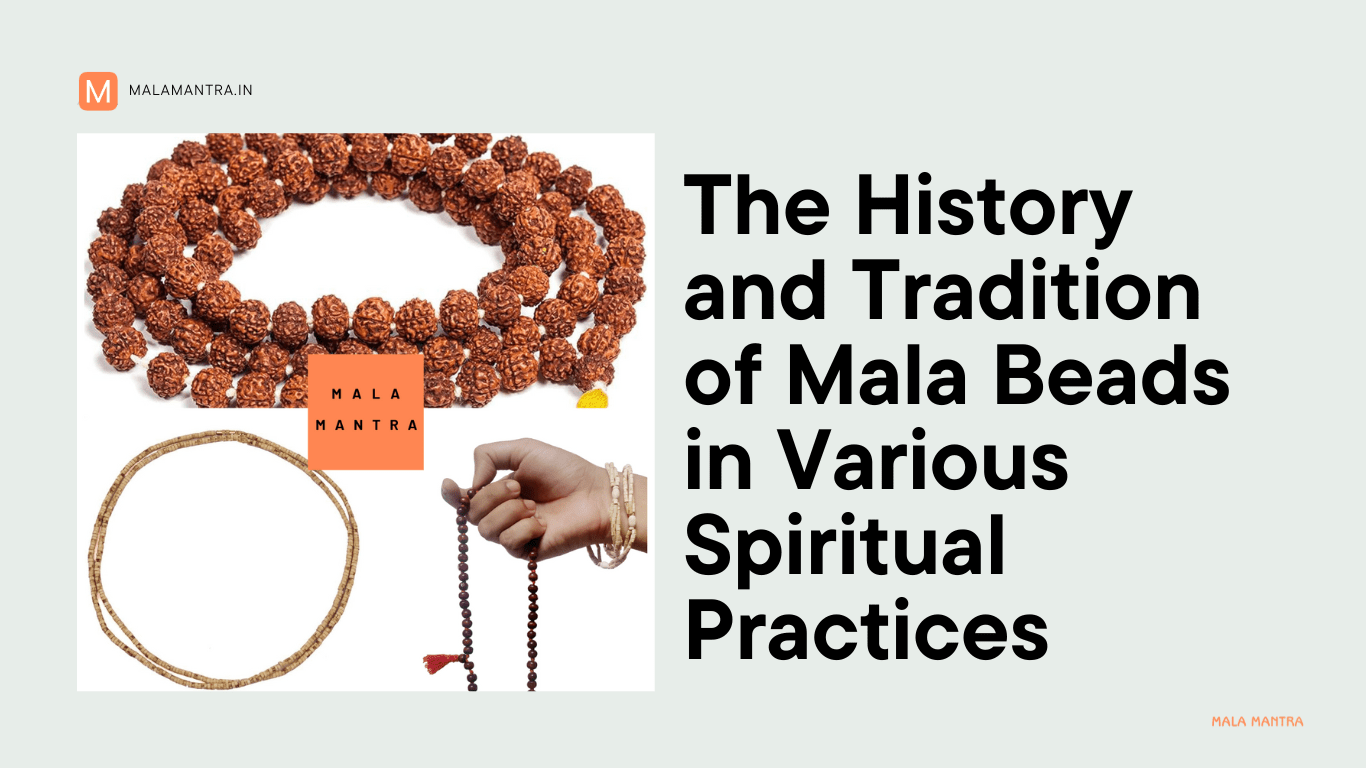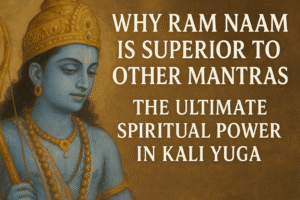Mala beads, an essential tool in spiritual practices, have been used for centuries to aid in meditation, prayer, and mindfulness. These prayer beads, typically consisting of 108 beads, serve as a guide to counting mantras or affirmations, helping practitioners maintain focus and enhance their spiritual experience. Although mala beads are often associated with Eastern religions, their significance spans across various cultures, including Hinduism, Buddhism, and Jainism. In this blog, we will explore the rich history and cultural importance of mala beads in different spiritual traditions.
What Are Mala Beads?
Mala beads are a string of beads used primarily for keeping count during the repetition of mantras. The number of beads, usually 108, is symbolic in many traditions. The beads are typically made from different materials like wood, seeds, gemstones, or even precious metals, each carrying unique properties that can enhance the spiritual practice. At the end of the mala, there’s often a larger bead called the “guru bead,” symbolizing the teacher or spiritual guide.

The History of Mala Beads in Spiritual Practices
Hinduism: The Origin of Mala Beads
In Hinduism, mala beads are used to recite mantras and are deeply connected to spiritual growth and devotion. The practice of using prayer beads is believed to have originated over 5,000 years ago in India. According to Hindu tradition, the number 108 is considered sacred, symbolizing the universe’s divine aspects — the 108 Hindu gods and goddesses, the nine planets, and the twelve zodiac signs.
Mala beads are used in various forms of meditation, including Japa meditation, where the practitioner repeats a mantra to connect with the divine. The repetition of the mantra with the aid of the mala helps cultivate a deeper sense of awareness, tranquility, and devotion.
Buddhism: The Role of Mala Beads in Mindfulness and Meditation
Buddhism has a long-standing tradition of using mala beads for meditation, particularly in the practice of mindfulness and concentration. The most common use of mala beads in Buddhism is for counting the recitations of a mantra during meditation. The number 108 is also important in Buddhism, representing the 108 earthly defilements that one must overcome to attain enlightenment.
In Buddhist tradition, mala beads are used to aid in “mantra recitation” — a process where a specific mantra or sacred sound is repeated to cultivate a focused mind and to cultivate a deeper connection to Buddha or Bodhisattvas. Different types of malas, such as the Tibetan or the Japanese malas, may vary in bead material, design, and the number of beads, but the core spiritual practice remains the same.
Jainism: Mala Beads in the Path to Liberation
In Jainism, mala beads are used as part of the practice of “Japa” — the repetition of sacred words or mantras to purify the mind and soul. Jainism shares a similar reverence for the number 108, considering it a powerful symbol for the path to liberation (moksha). The beads in Jain malas may be made of materials like sandalwood, which holds spiritual significance for its purifying qualities.
Jain practitioners use mala beads to recite the Jain mantra, which is focused on compassion, non-violence (ahimsa), and truth. By repeating the mantra with the mala, practitioners aim to align themselves with spiritual principles, achieving greater peace and self-awareness.
Cultural and Spiritual Significance of Mala Beads
Across all three traditions, mala beads are not just tools for meditation — they are deeply symbolic of the spiritual journey. They represent a connection to the divine, a path to mindfulness, and a tangible reminder of the importance of repetition in cultivating spiritual growth. The materials used in mala beads, such as sandalwood, lotus seeds, or gemstones, hold spiritual significance in many cultures. For example:
- Sandalwood: Known for its calming and soothing effects, sandalwood beads are often used to aid in meditation and prayer.
- Lotus Seeds: Symbolizing purity and spiritual awakening, lotus seed malas are used in both Hinduism and Buddhism.
- Gemstones: Different gemstones are believed to carry specific energies. For example, amethyst is often used for its healing properties, while turquoise is known to encourage communication and wisdom.
Modern-Day Use of Mala Beads
Today, mala beads have found their place in modern spirituality as well. Many people across the world, whether practicing yoga, meditation, or mindfulness, use mala beads to help them stay grounded and centered. The tradition of using mala beads has crossed cultural boundaries, and they are now embraced by individuals seeking peace, clarity, and connection to their inner selves.
In addition to spiritual practices, mala beads are also popular as jewelry. Wearing mala bead bracelets or necklaces has become a stylish way to stay connected to one’s spiritual journey while maintaining a sense of mindfulness in daily life.
Conclusion: The Everlasting Tradition of Mala Beads
Mala beads have been an integral part of spiritual practices for centuries, transcending cultural boundaries and religious traditions. Whether used in Hinduism, Buddhism, Jainism, or modern-day spiritual practices, mala beads remain a powerful tool for meditation, mantra repetition, and mindfulness. The rich history and deep symbolism of these sacred beads continue to inspire and guide individuals in their spiritual journeys.
At Malamantra.in, we offer a range of high-quality mala beads made from various materials, each designed to assist you on your spiritual path. Whether you’re a seasoned practitioner or new to the world of meditation, our collection of mala beads will support your journey toward peace, balance, and enlightenment.







